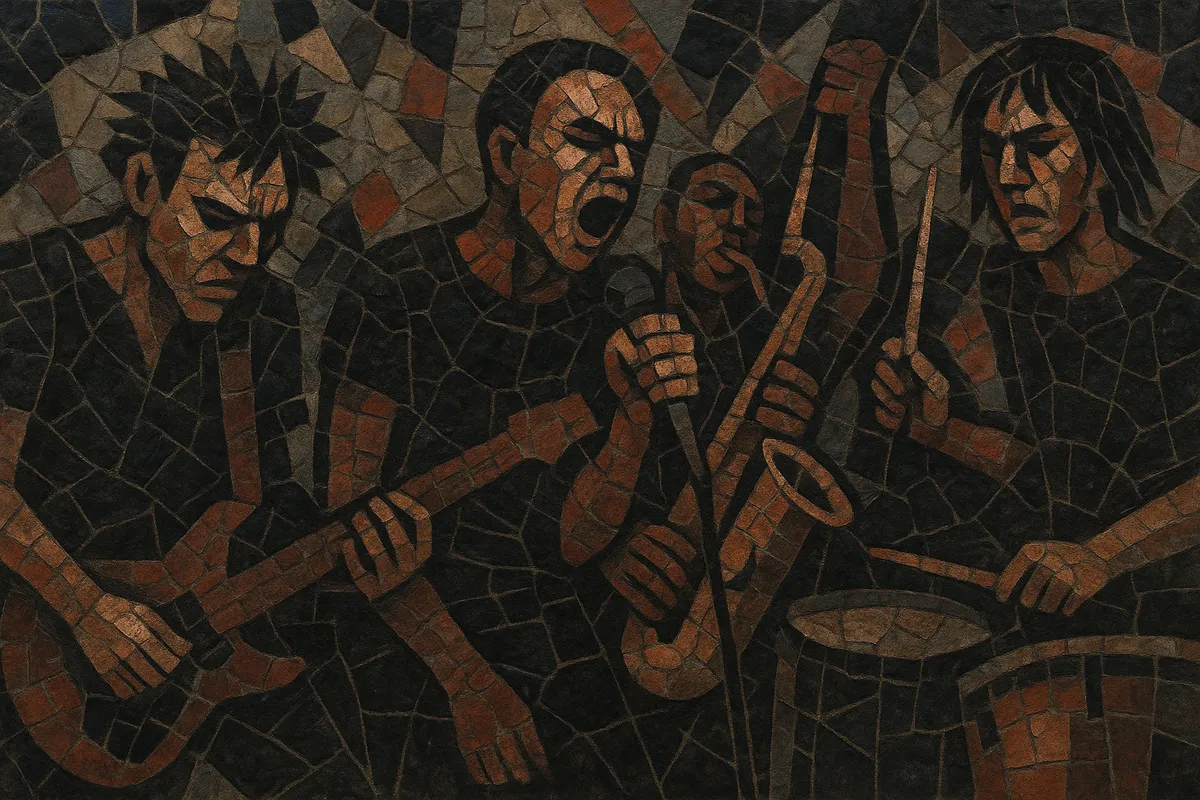No wave is a late-1970s New York City movement that rejected rock’s conventional songcraft and the slick optimism of new wave in favor of abrasive textures, atonality, and confrontational performance. It fuses the energy of punk with the dissonance of the avant‑garde and free jazz, often favoring texture and rhythm over melody and harmony.
The style typically features jagged guitars, skronking saxophones, primitive or motoric drums, and shouted, spoken, or yelped vocals. Songs may be extremely short and violent or long and hypnotically repetitive, with an emphasis on raw timbre, noise, and physical impact rather than hooks or virtuosity.
No wave emerged in Lower Manhattan in the late 1970s as a reaction against both corporate rock and the tidy, radio‑friendly contours of new wave. Rooted in the downtown art and performance scenes, it drew from punk’s immediacy but replaced riffs and choruses with noise, repetition, and anti‑virtuosic playing. Venues like CBGB, Max’s Kansas City, and artist-run spaces incubated the scene.
In 1978, Brian Eno produced the compilation “No New York,” featuring DNA, Teenage Jesus and the Jerks, Mars, and James Chance and the Contortions. The record served as a manifesto, documenting the movement’s extremes: abrasive guitar shards, free‑jazz saxophone “skronk,” and rhythm sections oscillating between primitive pummel and wiry funk. Parallel figures such as Lydia Lunch, Glenn Branca, Rhys Chatham, and Theoretical Girls linked no wave to the visual arts and experimental composition.
By the early 1980s, the initial wave fractured. Some artists pivoted toward danceable minimal funk (e.g., ESG, Liquid Liquid), while others pursued large‑ensemble guitar minimalism (Branca/Chatham) or moved into darker, heavier offshoots that helped shape noise rock and industrial textures. Although short‑lived as a cohesive scene, no wave’s aesthetic—anti‑style, anti‑structure, and pro‑texture—proved highly influential across underground music.
No wave’s imprint is audible in post‑punk’s angularity, noise rock’s timbral assaults, dance‑punk’s skeletal grooves, and the downtown New York experimental tradition. Its emphasis on texture, non‑idiomatic playing, and performance art helped normalize dissonance and noise as primary musical materials in independent and experimental rock for decades to come.
Embrace abrasion, immediacy, and anti‑virtuosity. Prioritize texture and physical impact over melody and harmonic richness. Reject predictable song forms and avoid polished production.


